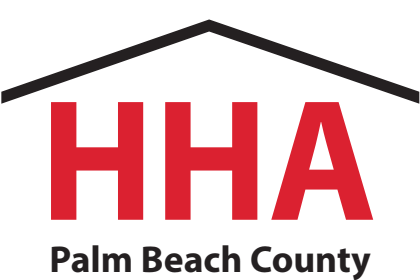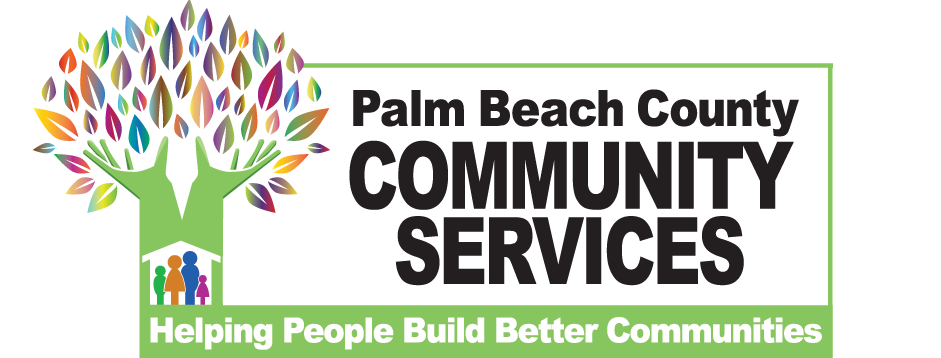Sub-Populations
 Seniors
Seniors
Like the general homeless population, the primary reasons for homelessness among the elderly are a lack of affordable housing and an increase in poverty. Many housing assistance programs have shifted their focus to target this sub-population in recent years, however, waiting lists for affordable housing units reserved for elderly residents remain considerable. Though many homeless seniors are eligible for Supplemental Security Income (SSI), the maximum monthly SSI benefit in the State of Florida is $637, substantially below the poverty line. Housing costs should utilize less than 30 percent of one’s monthly income, which means many low-income seniors in Palm Beach County can theoretically afford a living space that is no more than $200 per month. Income growth is not an option for most elderly individuals, as they have surpassed the age where they are able to work, their health status may not enable them to work, and they are unlikely to become married or enter into a dual income household. A rise out of poverty is not the answer, but increasing housing options can have a significant impact.
In addition to the inability for low-income seniors or homeless seniors to access affordable housing, this sub-population faces challenges related to transportation, communication in the digital age, and access to affordable healthcare. Many seniors, whether already homeless or facing the threat of homelessness, are unaware of their eligibility for public assistance and the availability of supportive services or are overwhelmed by the complex system through which they must navigate to access such support. The primary goal when addressing the senior population is prevention of the loss of housing. By providing more affordable and accessible housing that targets this sub-population, and by implementing outreach campaigns that promote the availability of supportive services, this goal is attainable.
 Prisioners Exiting Jail
Prisioners Exiting Jail
Prisoners are more likely to enter a homeless shelter within two years of their release, more than half of them during the first month. Most ex-prisoners returning to the community are able to stay with friends or family in the days immediately following their release. When looking for permanent housing, however, these individuals are confronted with multiple barriers. For many, incarceration for any extended length of time means that they have had no income, and therefore have no savings with which to pay deposits for housing, which sometime require first and last months’ rents. Their involvement in the criminal justice system often prevents communities from allowing them to become residents based on a fear of re-offense and a desire to maintain safety among the community. For many, criminal justice policies and terms of their parole limit their housing options further, as they are restricted from living with individuals with criminal records, at the site of the offense for which they were incarcerated, or with known substance abusers. Additionally, ex-prisoners often become ineligible for federally subsidized housing and Section 8 programs, food stamps, veterans or Temporary Assistance for Needy Families (TANF) program benefits.
Due to continuously decreasing funding for supplemental programs in the criminal justice system such as education and drug treatment, prisoners released today face significant challenges related to reintegration. Programs that provide immediate transitional housing, combined with pre-release counseling and planning services for those exiting prison are essential.
 Persons with Disabilities
Persons with Disabilities
The U.S. Census Bureau reports that 173,425, or 14.6 percent of Palm Beach County’s population has one or more disabilities. Public awareness campaigns and enforcement of the Americans with Disabilities Act (ADA) has, in recent years, significantly increased employment opportunities for the disabled population. Despite the fact that 41.9 percent of Palm Beach County’s disabled population of working age (16-64 years) is employed, the percentage of this population living below the poverty level is significantly higher – 13.9 percent – than the 9.4 percent rate of poverty among the general population in the County.
Similarly to the senior population, many members of this sub-population live on a modest fixed income from either Supplemental Security Income (SSI) or Social Security Disability Insurance (SSDI). Persons with disabilities, however, face additional complications related to applying for such benefits, as their receipt is not based upon the fixed characteristic of age, as with the senior population, but a more subjective set of criteria for disability determination. For persons with disabilities who are awaiting benefits, a lack of income during the interim may force them into situations of homelessness. Every state is provided the option to apply for interim payment funding from the Social Security Administration for its disabled residents. The State of Florida, however, has opted not to apply for these funds, which would provide temporary cash assistance to individuals with a pending Social Security claim. Local programs provide limited assistance for individuals in such circumstances, but because the time involved in applying and securing Social Security benefits is often lengthy, programs often find it more cost effective to pay for Assisted Living Facilities for these individuals rather than assisting them in remaining in their homes.
The need to meet ADA requirements and provide ADA accommodations for homeless individuals who are disabled cause additional strains on homeless services providers. Emergency shelters, transitional and permanent supportive housing options for physically disabled individuals must often be located on a ground floor and retrofitted for accessibility, and the availability of sign language interpreters and large print/braille materials are necessary at every stage of a hearing or vision impaired individual’s journey from homelessness to self-sufficiency, particularly during the intake process, when these individuals feel most vulnerable. Adequate funding for ADA accommodations is a necessity in addressing the needs of this sub-population.
 Pregnant Women
Pregnant Women
Pregnancy is unarguably one of the most critical periods of a woman’s life. The need for adequate shelter, access to prenatal care, and a solid support system is crucial for the health and wellbeing of both mother and baby. Homeless women have low birth rate babies at higher rates than other women. Infants of homeless mothers require special care immediately after birth four times as often as other newborns, and homeless babies collectively demonstrate slower physical and cognitive development than other children. Programs that provide transportation to appointments, provide counseling and support related to domestic violence, assist with legal issues related to child custody, educate new mothers about the importance of prenatal care and good nutrition and assist them in accessing prenatal health care are vital to this sub-population.
In a 2001 publication of the Health Care for the Homeless Clinicians’ Network, it was reported that 8 percent of homeless women under the age of 50 report being pregnant at any given time. Unfortunately, under current shelter system guidelines, an unaccompanied pregnant woman is not considered a family, but single, and is often limited to living in the shelter’s general population. Additionally, many shelters do not have the resources to address specific needs of pregnant women, who could also benefit from the feeling of community often more prevalent in a family shelter environment.
 Single Women Who Do Not Have Children
Single Women Who Do Not Have Children
Single men comprise 51 percent of the total homeless population in the U.S. while single women comprise only 17 percent. Partially due to the risk factors associated with women sleeping on the streets and therefore the limited plainly observable number of homeless women, the public’s perception of the size of this sub-population is not consistent with reality. When considering the circumstances that cause a single woman to be homeless, domestic violence and substance abuse are leading factors. Facilities that provide services specific to these sub-populations exist throughout Palm Beach County, but often have stringent rules regarding who may access their shelter beds, which are often filled to capacity. For single women who are not immediately fleeing a batterer or find themselves homeless due to factors such as financial circumstances or medical conditions, the availability of emergency and transitional housing is minimal, as family shelters serve only adults accompanied by children, and most shelters that accept single individuals cater to the larger male population. The deficiency in shelter beds designated for single women without children is not only a growing issue in Palm Beach County, but recognized nation-wide.
 Undocumented Individuals
Undocumented Individuals
The best available estimate of the number of undocumented individuals currently living in the U.S. is 9.3 million, representing 26 percent of the total foreign-born population according to “Undocumented Immigrants: Facts and Figures.” January 12, 2004. Almost two-thirds of these individuals live in just six states - California, Texas, New York, Illinois, New Jersey and Florida, which is home to ten percent of the undocumented population. The percentage of documented immigrants in South Florida is higher than those without legal documents. Still, the concentration is high.
Language barriers and fear of deportation are the primary reasons why undocumented individuals do not actively seek out services when facing a situation of homelessness or trying to locate housing. Even when communication is not an issue because a service provider has a multi-lingual staff, it often remains difficult for staff members to earn the trust of these individuals. In many cases, time constraints offer an additional barrier, as many undocumented individuals are preoccupied with finding employment, or work long hours with unfair wages. Placing these individuals in affordable housing is especially challenging due to the fact that they are ineligible for many government funded housing, health care and financial assistance programs.
 People with Co-Occurring or Dual Needs
People with Co-Occurring or Dual Needs
Many homeless individuals have what are considered “co-occurring needs” or “dual needs,” meaning that they fall into multiple sub-population categories. This situation provides special challenges for service provision, as an organization that specializes in providing mental health treatment may not have the appropriate resources to assist a woman who is also pregnant, or is not a legal resident. Collaboration efforts in order to provide cross-over services for homeless individuals and families between the multiple service providers in the Continuum of Care network are made whenever possible. The current system, however, does not always allow this to happen with ease. Case management becomes difficult when multiple agencies are assisting an individual without a single point of contact.
For the homeless individual, a co-occurring needs status is particularly difficult. Managing multiple appointments, accessing transportation between facilities, and making decisions when advice or information given by multiple providers is conflicting can exponentially increase one’s anxiety over an already stressful situation. An umbrella system of service management for those with co-occurring or dual needs is needed in order to streamline the use of valuable resources, eliminate duplication of services and ensure that the various needs related to each of an individual’s multiple issues is being optimally met.



